Shopify GraphQL: Everything you need to know
Summer Nguyen | 01-29-2024
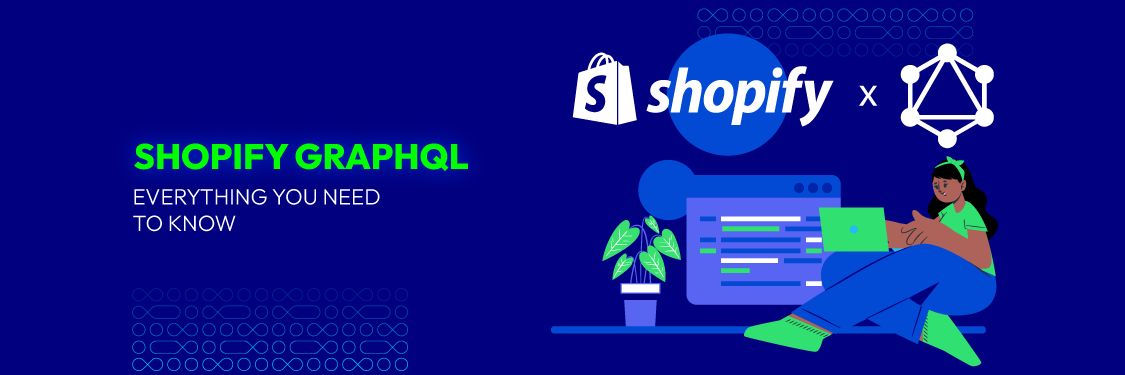
Shopify GraphQL is a great tool for businesses to fetch and assess data. With the introduction of GraphQL, Shopify has taken a giant leap forward in providing developers and entrepreneurs with a powerful toolset for building robust and flexible online stores.
If you’re an e-commerce enthusiast or a business owner seeking to unleash the full potential of your online store, this blog is for you. We’ll explore Shopify’s game-changing GraphQL technology and its best practices. Let’s get started!
Table of Contents:
What is GraphQL and how does it work?
In 2015, Facebook introduced GraphQL, an open-source query language designed to revolutionize the way APIs retrieve information from existing data. With GraphQL, the process of requesting data from other applications or software becomes structured, expressive, and incredibly efficient.
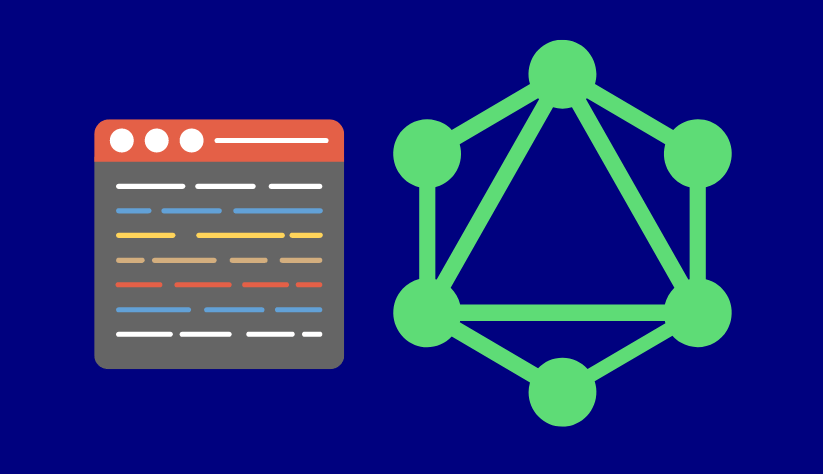
In contrast to REST APIs, GraphQL empowers clients and users to make a single API call and fetch multiple resources simultaneously. This means that instead of receiving excessive or insufficient data, GraphQL ensures that the response precisely matches the requested information, eliminating unnecessary clutter.
By enabling developers to specify their data requirements precisely, GraphQL significantly enhances the efficiency of data retrieval. With GraphQL, there’s no more sifting through excess information or handling unnecessary data. Instead, users can enjoy a streamlined and optimized experience, receiving only the needed information.
At the heart of GraphQL’s functionality is the concept of a single endpoint that handles all API requests. This endpoint, defined in the GraphQL language, serves as a gateway for communication between the client and the API.
When a client needs specific data, it formulates a query that outlines its requirements. This query is then sent to the designated API endpoint. Unlike traditional approaches, GraphQL allows clients to request only the needed data, minimizing the information transmitted over the network.
Upon receiving the query, the API processes it and returns a response containing precisely the data requested by the client. This targeted approach eliminates excessive data transmission, resulting in more efficient and optimized network communication.
What are the key features of Shopify GraphQL?
Shopify GraphQL offers several key features that make it a great tool for developers and users as well. Some of these features include:
- Strongly-typed Schema: GraphQL provides a strongly-typed schema that acts as a contract between the server and the client. This schema defines the available data types, fields, and relationships, enabling accurate and predictable data retrieval.
- Single Endpoint: GraphQL uses a single flexible endpoint, simplifying the API design and reducing the required requests. Clients can retrieve multiple resources in a single query, reducing network overhead and improving performance.
- Introspection: GraphQL provides introspection capabilities, allowing developers to query the schema at runtime. This enables better debugging, troubleshooting, and exploration of the API’s capabilities.
- Efficient Development and Maintenance: By providing a clear contract, precise data fetching, and self-documentation, GraphQL enhances developer productivity and reduces the cost of developing and maintaining APIs. It simplifies client-side code, improves collaboration, and shortens feedback cycles.
What are the main differences between GraphQL and REST APIs in Shopify development?
Since the early 2000s, APIs have been a cornerstone of the rapidly evolving Internet landscape. Over the years, they have undergone updates to keep pace with changing requirements. Among the most widely known and used APIs are REST APIs, which employ simple HTTP requests to transmit data in popular formats such as JSON or XML.
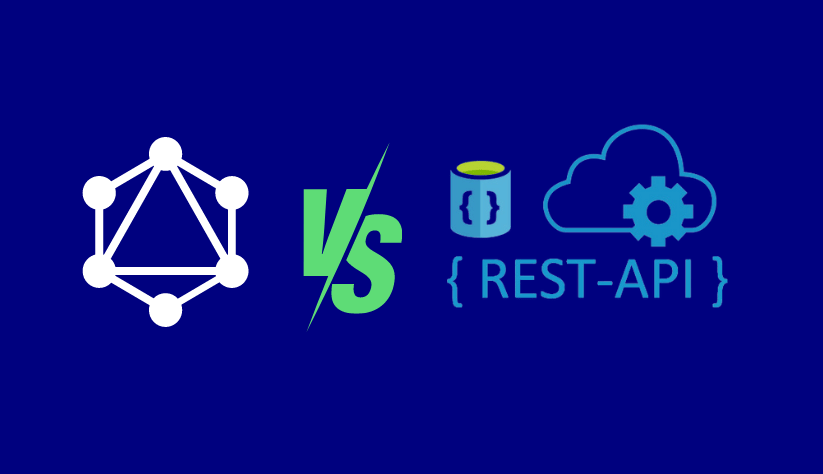
While REST APIs have gained familiarity among users, they do come with certain limitations. One of the drawbacks of REST APIs is their tendency to over-fetch or under-fetch data in response to requests. Over-fetching occurs when a single request retrieves excessive data, resulting in unnecessary network usage and reduced efficiency. On the other hand, under-fetching happens when a request fails to retrieve sufficient data, leading to limitations and gaps in the desired information.
Recognizing the limitations of over-fetching and under-fetching that plagued REST APIs, GraphQL was introduced as a dedicated solution. While REST APIs have successfully tackled various data retrieval challenges, GraphQL emerged as a specialized alternative purpose-built to overcome the shortcomings of REST in modern applications.
Moreover, the disparity between GraphQL and REST API also lies in the process of requesting data:
- With REST APIs, clients typically request different endpoints for specific resources. Each endpoint corresponds to a specific data entity or operation. This can lead to multiple round trips to the server, resulting in over-fetching or under-fetching data. Clients have limited control over the shape and structure of the response, as the server defines the structure of the data returned.
- On the other hand, GraphQL revolutionizes the data retrieval process by using a single endpoint. Clients can send a single GraphQL query that specifies the exact data they need, including the fields and relationships. This allows clients to retrieve multiple resources in a single request, reducing network overhead and improving efficiency. Moreover, GraphQL offers a strongly typed schema, enabling clients to explore and request precisely the data they require.
Why should you use Shopify GraphQL?
There are several advantages when it comes to using Shopify GraphQL. Here are some benefits that businesses should consider:
Define the data needs
One of the benefits of using Shopify GraphQL is the ability to precisely define the data you need. Instead of retrieving excessive or insufficient information, GraphQL allows you to narrow down your data requirements, eliminating the need for multiple API calls. This targeted approach not only streamlines the retrieval process but also reduces the amount of data transferred between the server and the client.
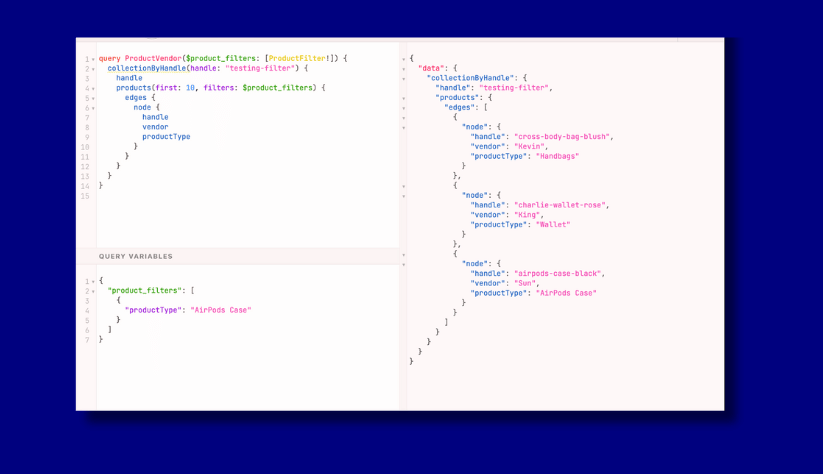
By minimizing network latency and optimizing bandwidth usage, Shopify GraphQL significantly enhances the performance and scalability of your applications. With faster and more efficient data retrieval, you can provide a seamless user experience, even as your business grows.
Overcome the versioning and compatibility issues
In a RESTful API, versioning can pose challenges as any changes to the API, such as adding or removing fields, may disrupt the functionality of existing clients relying on it.
However, the GraphQL Shopify API offers a distinct advantage in this regard. Its strongly-typed schema enables a simpler evolution of the API over time without causing disruptions for existing clients.
Clients can confidently make API calls, knowing that the data they receive adheres to the expected schema. Meanwhile, Shopify developers can modify the API by adding or removing fields without breaking it for their users.
This streamlined approach to API evolution reduces the cost and complexity of upgrading the API. It also improves maintainability, as developers can modify the API without worrying about compatibility issues with existing clients. With GraphQL Shopify API, both developers and clients benefit from a more efficient and seamless API evolution process.
Improve documenting and testing
One of the notable advantages of GraphQL is its enhanced documentation and testing capabilities. The self-documenting nature of GraphQL simplifies the process of API comprehension for developers, enabling them to write accurate tests with ease.
The well-defined schema and query language establish a clear and precise contract between the server and the client, minimizing the chances of miscommunication or misunderstandings. As a result, collaboration between teams improves, and feedback cycles become faster, ultimately reducing the overall cost of API development and maintenance.
Furthermore, GraphQL’s introspection feature is invaluable in debugging and troubleshooting. Developers can dynamically explore the API and its data types at runtime, gaining insights into the structure and capabilities of the API. This introspection capability empowers developers to efficiently identify and resolve any issues that may arise. This could enhance the overall quality and reliability of the API.
Reduce client-side code complexity
GraphQL simplifies client-side code by minimizing the complexity of making multiple API calls and performing intricate data transformations. With GraphQL, clients can leverage fragments and nested queries to specify comprehensive data requirements within a single request. This eliminates the necessity for extensive client-side code to handle multiple API calls and intricate data transformations.

By reducing the complexity of client-side development, GraphQL enhances developer productivity and accelerates the release of new features. The streamlined approach significantly decreases the likelihood of errors, resulting in more efficient and reliable development processes.
Real-time updates
In an e-commerce platform like Shopify Plus, real-time data access is paramount to providing customers with an enhanced shopping experience and streamlined inventory management. GraphQL is optimized to cater to these requirements by offering the capability for customers to subscribe to specific data changes.
Through GraphQL subscriptions, customers can receive instant notifications whenever relevant data undergoes modifications, such as when an order is placed. This real-time update feature proves invaluable on e-commerce platforms like Shopify, as it empowers businesses to improve customer experiences by delivering timely information.
Moreover, Shopify GraphQL helps reduce the overhead associated with inventory management. This enables businesses to efficiently maintain stock levels and respond promptly to customer demands.
Compatibility with business
GraphQL offers a future-proof solution for updating your API as your business and data requirements evolve, ensuring compatibility with your existing applications. It seamlessly adapts to shifting business needs by adding new fields and types to the schema without disrupting existing queries. This flexibility empowers you to update your API confidently, without the risk of breaking any current applications, saving time and avoiding errors.
The built-in type system of GraphQL streamlines the process of updating and enhancing your API. As your business demands change, you can easily modify and improve your API to meet those evolving needs. This inherent flexibility and simplicity in updating your API with GraphQL ensure that you can efficiently respond to the changing demands of your business.
How to integrate Shopify with GraphQL
When utilizing Shopify GraphQL Integration for query execution, authentication through a valid Shopify access token is required. Depending on the type of application, different authentication methods are employed. Public and custom applications utilize OAuth authentication for accessing information, while private applications rely on HTTP authentication.
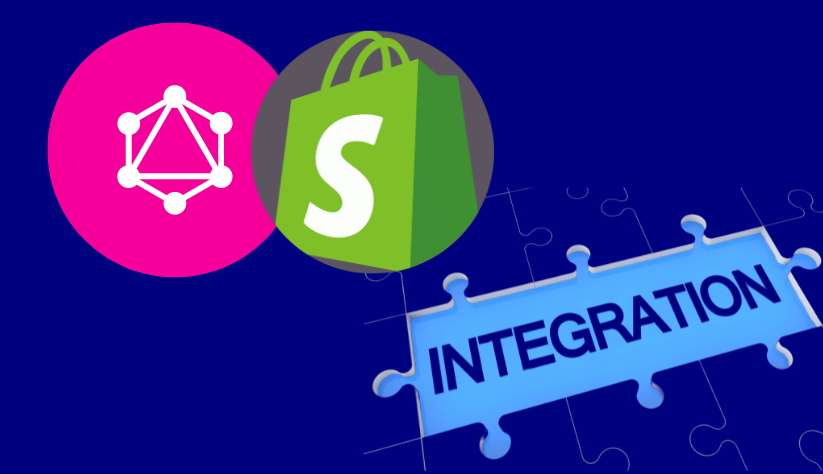
In all API queries, it is necessary to include the X Shopify access token as a header. To streamline the authentication process, developers can leverage Shopify-supported client libraries provided by Shopify. These libraries offer convenient tools and resources to simplify the authentication workflow.
To utilize Shopify GraphQL Integration and create a private application, you can follow the step-by-step process below:
Step 1: Create a Shopify developer account
Start by creating an account on the Shopify Developer platform. This account will give you access to the necessary tools and resources for application development.
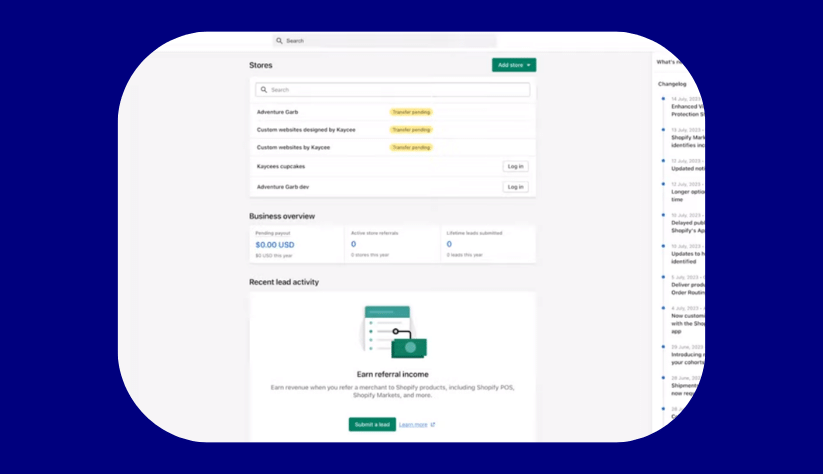
Step 2: Access the Developer Dashboard
Once you’ve created your account, navigate to the developer dashboard. This dashboard serves as the central hub for managing your Shopify applications.
Step 3: Create a Development Store
Within the developer dashboard, locate the “Development Shops” section. Click on it to proceed.
Step 4: Create a new Development Store
In the “Development Shops” section, you can create a new development store. Click on this option to set up a new store specifically for development purposes.
Step 5: Navigate to the Apps Section
After creating the development store, log in to the store and locate the “Apps” section. You can typically find this section in the left pane of the store’s interface.
Step 6: Create a Private App
Within the “Apps” section, you’ll have the ability to create a private app. Select this option to initiate the creation process.
Step 7: Enter Credentials and Save
In the private app creation screen, you will be prompted to provide the necessary credentials and information for your application. Fill in the required details and save your changes.
Step 8: Generate the Shopify GraphQL Access Token
Once you successfully create the private app, the Shopify GraphQL access token will be generated. This token is the authentication mechanism to access the GraphQL API for your private application.
By following these steps, you can create a private application using Shopify GraphQL Integration and obtain the Shopify GraphQL access token required to interact with the API for your application.
10 best practices for Shopify GraphQL
When developing GraphQL APIs for Shopify, it’s essential to adhere to a set of best practices to ensure optimal performance for your application. Here are some practices you can follow:
- Leverage the Shopify Admin API GraphQL explorer: Take advantage of the Shopify Admin API GraphQL Explorer, a valuable tool for testing and exploring the capabilities of the Shopify Admin GraphQL API. This tool allows you to experiment with queries and mutations, instantly observing real-time results.
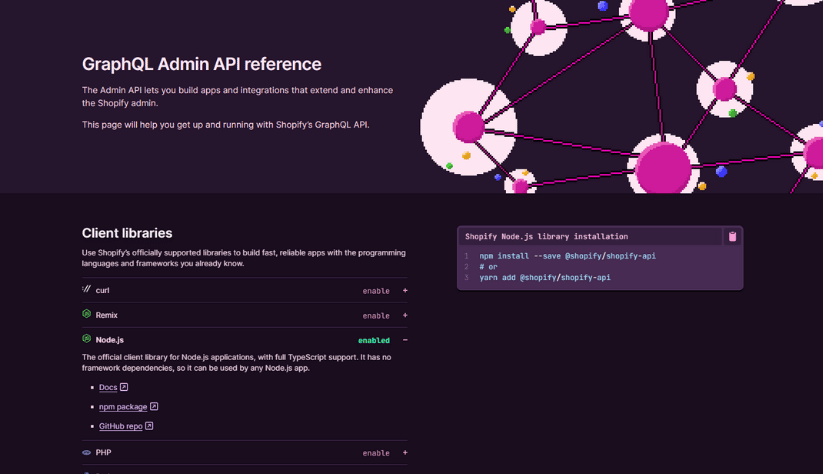
- Utilize the power of Shopify Admin API GraphQL: Leveraging the Shopify Admin API GraphQL is a highly effective approach for constructing Shopify apps. This comprehensive API offers a unified endpoint for accessing Shopify data, simplifying data retrieval processes.
- Implement pagination for handling large datasets: When dealing with substantial datasets, implementing pagination is crucial. By employing pagination techniques, you can limit the data returned in each request, improving performance and reducing server load.
- Optimize efficiency with query batching: When executing multiple queries, it is advisable to batch them together to reduce the server’s request count. Employing query batching helps boost performance and lighten the server load, resulting in a more efficient application.
- Employ caching for enhanced performance: Utilizing caching techniques effectively enhances performance and alleviates server load. By caching frequently used data, you can reduce the number of requests made to the server, improving overall application performance.
- Enhance mutations with input types: When performing mutations, employing input types to specify the data to be updated is considered best practice. Utilizing input types enhances code readability and maintainability, making it easier to understand and manage the data being modified.
- Leverage GraphQL subscriptions: Utilize the power of GraphQL subscriptions to subscribe to real-time updates of data within your Shopify store. GraphQL subscriptions are particularly valuable for developing real-time applications like chat apps or notification systems, as they enable seamless integration and delivery of real-time updates to clients.
- Employ clear and descriptive field names: When designing your schema, prioritize the use of clear and descriptive field names that accurately convey the underlying data they represent. Opting for meaningful field names enhances the understandability and maintainability of your schema, making it easier for developers to comprehend and work with the data.
Wrapping up
In a nutshell, Shopify GraphQL is a potential tool for creating scalable, maintainable, and performant applications that meet the ever-changing demands of businesses. As you start using Shopify GraphQL, you can confidently apply these best practices to optimize your development process.
The guide to Shopify GraphQL integration in this blog will also help you better understand this powerful technology. So get ready to grow your online business using this magic wand!



